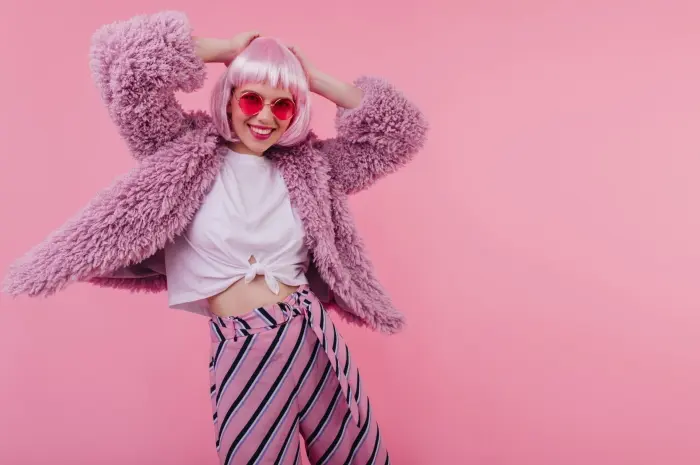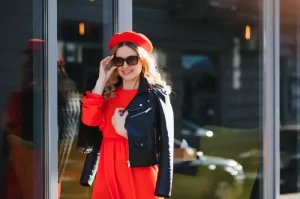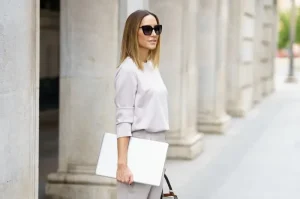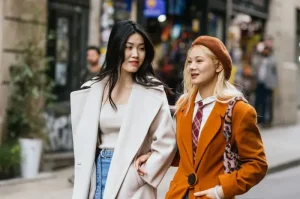Explore the most daring and innovative fashion trends of the year, where creativity, boldness, and unconventional designs redefine modern style.
Fashion is a constantly evolving art form, with designers, influencers, and celebrities pushing boundaries to create new, exciting trends. Each year, we see the rise of experimental styles that challenge traditional aesthetics, embrace bold designs, and redefine self-expression.
From avant-garde silhouettes to futuristic fabrics and unexpected accessories, these unique trends showcase the creativity and unpredictability of modern fashion.
This article delves into the ten most unique and experimental fashion trends of the year, highlighting how they have influenced the industry and shaped contemporary style.
1. Futuristic Metallics and Sci-Fi Fashion
This year, fashion took a leap into the future with metallic fabrics, space-inspired silhouettes, and high-tech accessories dominating the runway.
Designers such as Balmain and Mugler introduced structured garments made of liquid metal-like materials, holographic textiles, and reflective surfaces that capture the essence of sci-fi aesthetics.
Celebrities and influencers embraced this trend, sporting chrome-finished dresses, silver metallic coats, and holographic boots.
The futuristic look isn’t just about the material—it’s about sharp, exaggerated shoulders, robotic textures, and avant-garde minimalism that make the wearer look like they stepped out of a cyberpunk world.
2. Ultra-Baggy Silhouettes and Exaggerated Proportions
Oversized clothing has been a staple in streetwear for years, but this year, fashion took it to an extreme with ultra-baggy silhouettes that redefine comfort and volume.
From exaggerated blazers and massive wide-leg pants to XXL puffers and enormous knit sweaters, designers played with proportions to make a bold statement.
Brands like Balenciaga, Rick Owens, and Vetements showcased dramatic, oversized pieces that blurred the lines between fashion and performance art.
This trend embraces a rebellious attitude, defying conventional tailoring and body-conforming fits to prioritize individuality and an almost surreal aesthetic.
3. Genderless and Androgynous Dressing
Fashion has continued to break down gender norms with androgynous dressing, celebrating fluidity in clothing choices. Designers like Harris Reed, Thom Browne, and Gucci led the charge, creating collections that blend masculine and feminine elements seamlessly.
Wide-leg trousers paired with corsets, structured suits adorned with lace details, and flowing gowns worn by men on red carpets exemplify this shift towards inclusivity.
The rejection of gendered fashion not only embraces individuality but also encourages a more open, expressive approach to style where clothing is no longer confined by societal expectations.
4. Avant-Garde Face Coverings and Headpieces
What started as a functional necessity during the pandemic has evolved into an artistic statement, with avant-garde face coverings and elaborate headpieces making waves in fashion.
From sculptural masks to intricate veils and futuristic helmets, these accessories have transformed the way we view facial fashion.
Designers like Maison Margiela and Schiaparelli have embraced surrealist elements, introducing dramatic, otherworldly headwear that challenges conventional beauty standards.
This trend reflects both a desire for mystique and an artistic rebellion, proving that fashion can turn even the most basic accessories into groundbreaking works of art.
5. Surrealist and Optical Illusion Prints
Bold prints have always been a staple in fashion, but this year saw a rise in surrealist and optical illusion designs that create mind-bending visual effects.
Trompe-l’œil (trick-of-the-eye) prints, distorted patterns, and multi-dimensional textures give the illusion of movement and shape-shifting clothing.
Designers like Jean Paul Gaultier, Loewe, and Balenciaga played with visual deception, using prints that mimic ripped fabric, second-skin illusions, and hyper-realistic patterns.
This trend celebrates the power of digital art in fashion, proving that clothing can be both a wearable canvas and an artistic statement.
6. Neon Core and Hyper-Saturated Colors
While minimalism still has its place, hyper-saturated colors and neon shades have taken over as a dominant trend. From fluorescent green coats to electric blue suits and vivid magenta dresses, high-voltage hues are being used to create eye-catching statement looks.
Brands like Valentino, Prada, and Off-White have embraced bold, monochromatic neon outfits that radiate energy and confidence.
This trend is all about pushing the boundaries of color theory, proving that high-contrast, hyper-bright ensembles can be just as elegant as their muted counterparts. The effect is visually arresting, making neon a go-to choice for those looking to stand out.
7. Deconstructed and Inside-Out Clothing
Deconstructionism in fashion has reached new heights, with designers turning inside-out seams, exposed stitching, and unfinished hems into a deliberate aesthetic.
This trend embraces imperfection, turning raw-edged fabrics, asymmetrical cuts, and unconventional layering into a high-fashion statement.
Brands like Margiela, Y/Project, and Comme des Garçons are masters of this technique, using deconstruction to challenge traditional tailoring and offer a fresh perspective on craftsmanship.
Whether it’s inside-out denim, frayed skirts, or tops that look like they were pieced together spontaneously, this trend thrives on unexpected details and creative unpredictability.
8. Inflatable and Air-Sculpted Fashion
One of the most unconventional trends of the year is inflatable and air-sculpted fashion, with designers pushing the boundaries of what fabric can do.
Pioneered by brands like Moncler and Craig Green, these futuristic garments use air-filled structures to create voluminous, floating shapes. Inflatable jackets, bubble dresses, and sculptural coats have transformed fashion into wearable art.
This trend blurs the line between fashion and performance, bringing an element of playfulness and surrealism into the industry. The exaggerated, balloon-like shapes challenge the traditional structure of clothing and prove that fashion can be as interactive as it is stylish.
9. Tech-Infused Wearables and Smart Fashion
Technology and fashion have increasingly intertwined, leading to the rise of smart wearables that go beyond aesthetics. LED-embedded fabrics, color-changing materials, and AI-assisted styling have become major innovations in the industry.
Designers like Anouk Wipprecht and Iris van Herpen have explored high-tech clothing that responds to movement, sound, and even biometric data. Heated jackets, self-lacing sneakers, and interactive dresses that react to their environment showcase how fashion is evolving in the digital age.
As wearable tech continues to advance, the future of fashion will likely see even greater integration of technology, merging style with functionality.
10. Second-Skin Bodysuits and Full-Body Coverings
This year, second-skin bodysuits became a major fashion statement, popularized by brands like Balenciaga, Mugler, and Marine Serre. These ultra-fitted, head-to-toe coverings create a sleek, futuristic silhouette, often featuring intricate patterns or sheer fabrics for a bold visual effect.
Celebrities like Kim Kardashian and Beyoncé have embraced the trend, proving that body-hugging, full-coverage fashion can be both empowering and avant-garde.
The concept of the second-skin bodysuit challenges conventional notions of exposure and modesty, redefining how fashion interacts with the human form.
The fashion trends of the year have been defined by bold experimentation, technological advancements, and a fearless approach to self-expression.
From surrealist prints to sci-fi metallics and inflatable garments, the industry continues to push the boundaries of creativity.
These experimental trends highlight fashion’s role as an evolving art form, reflecting cultural shifts, technological innovations, and the ever-changing landscape of personal style.
As we move forward, these daring trends will continue to inspire new forms of expression, proving that fashion is not just about clothing—it’s about breaking limits and reimagining what is possible.





